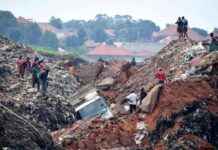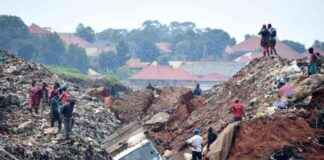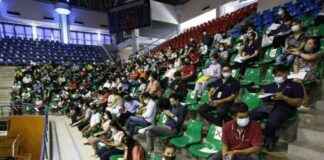Escalating Crisis in Donbass: Russian Aggression Continues Despite Ukrainian Efforts
The situation in the Donbass region has reached a critical point as Russia continues its aggression, despite key cities being captured by Ukrainian forces. On August 19, 2019, Ukraine issued a directive to evacuate civilians in strategic eastern cities, while Russian troops persist in advancing further into Ukrainian territory. The conflict has escalated significantly, with Ukraine launching attacks in the Kursk region to divert attention from the ongoing Russian offensive.
Sergei Dovgirek, the head of the Pokrovsk city administration, expressed grave concern for the safety of residents, especially children, as they face displacement due to the Russian incursion. The city of Pokrovsk, located in the Donetsk region, holds strategic importance for Ukrainian forces as it serves as a vital transportation hub connecting to the city of Kostiantynivka, another key military center. This connectivity allows for easier reinforcement and evacuation routes, making it a crucial location in the ongoing conflict.
Currently, approximately 53,000 people, including nearly 4,000 children, reside in Pokrovsk. The Ukrainian government has been compelled to enforce evacuations to ensure the safety of civilians amidst the escalating hostilities. Dovgirek emphasized the necessity of relocation when faced with the imminent threat of enemy weaponry, stating that evacuation is an essential measure to avoid casualties and protect the civilian population.
The rate of evacuations has increased from 500 individuals per day to 600 individuals per day, reflecting the heightened urgency of the situation. Despite the ongoing conflict, essential services in Pokrovsk continue to operate normally, but are prepared to cease operations as Russian forces draw nearer. The evacuation order in Pokrovsk came shortly after Ukrainian President Volodymyr Zelensky accused Russian forces of persistent aggression in the Kursk region, claiming that the offensive was achieving its objectives and gaining ground in the conflict.
International Response and Russian Countermeasures
International observers have raised concerns about Russia’s aggressive actions in the Donbass region and its impact on regional stability. The BBC reported that Russia swiftly responded to the destruction of the Saymsky River bridge in the Kursk region by constructing temporary pontoon bridges to maintain supply lines for their forces. Satellite imagery revealed the rapid construction of two pontoon bridges near the town of Glushkovo, demonstrating Russia’s ability to adapt quickly to changing battlefield conditions.
The Institute for the Study of War (ISW) highlighted Russia’s steadfast commitment to its offensive strategy in the eastern coastal regions, while also noting Ukraine’s timely intervention in the Kursk region. Ukraine’s preemptive strikes in Kursk indicate a shift towards proactive measures to counter Russian aggression, potentially yielding more favorable outcomes than reactive responses in the conflict.
Ukrainian authorities claim to have secured approximately 1,000 square kilometers of territory in the Kursk region since the start of the offensive on August 6. ISW estimates that Russia has contested Ukrainian control over 1,175 square kilometers of territory between January and July of the current year, underscoring the dynamic nature of the conflict. Despite conflicting claims over territorial control, analysts suggest that Ukraine has not fully established dominance over the areas they purportedly hold.
Challenges and Prospects for Peace
The ongoing crisis in Donbass poses significant challenges for both Ukraine and Russia, as the conflict shows no signs of abating. The humanitarian crisis resulting from the conflict has forced thousands of civilians to flee their homes, seeking refuge in safer areas. The displacement of families, particularly children, exacerbates the already dire situation in the region.
Efforts to broker a ceasefire and initiate peace talks have been met with limited success, as both sides remain entrenched in their positions. The lack of a diplomatic breakthrough prolongs the suffering of civilians caught in the crossfire and hinders the prospects for a lasting resolution to the conflict. International pressure to de-escalate hostilities and engage in meaningful dialogue remains essential to resolving the crisis in Donbass.
As the conflict continues to escalate, the toll on civilian populations and infrastructure mounts, underscoring the urgent need for a diplomatic solution. The international community must intensify efforts to facilitate dialogue between Ukraine and Russia, fostering a conducive environment for resolving the conflict and restoring peace in the region. The stakes are high, and the consequences of inaction are grave, making it imperative for all parties involved to prioritize diplomacy and negotiation in seeking a sustainable resolution to the crisis in Donbass.




















